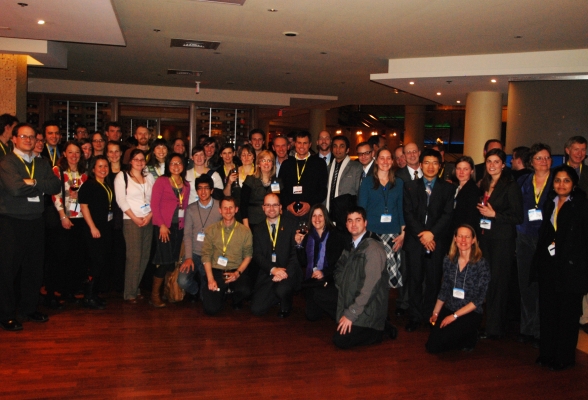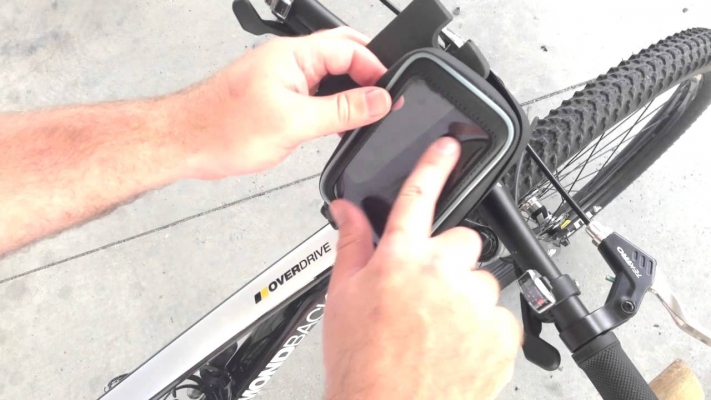If you weren’t one of the 10,000 people who attended the Transportation Research Board’s Annual Meeting in January, there are fifty students and twenty faculty for PSU, UO, OSU and OIT who can tell you what they learned there. OTREC's bright yellow lanyards made our presence especially visible! PSU student Brian Davis blogged about his experience, OTREC’s Jon Makler was interviewed in a local newspaper, and the Oregon “delegation” at the conference was covered by both local and national blogs. Team OTREC filed some daily debriefs, highlighting presentations on topics such as federal stimulus investments in Los Angeles and Vermont’s efforts to address their transportation workforce crisis with returning military veterans (as well as the...
Read moreView slides
If you would like to receive continuing education credits such as PDH or CM, please make sure to complete this evaluation form once you've watched the entire video so that we have a record of your attendance.
Watch video:
Read morePSU Special Transportation Seminar:
An analytical derivation of the capacity at weaving sections consistent with empirical observations and micro-simulated results
Where: ITS Lab, Room 315, PSU Engineering Building
Summary: Weaving sections are discontinuities of the highway network formed when merge segments are closely followed by diverge segments. Because of their geometrical configuration, weaving areas generate numerous lane changes. Those lane changes lead to a reduction of the capacity and affect therefore the operation of weaving sections.
This contribution aims at investigating empirically the lane changing behavior at a weaving section located in Grenoble (France). The data have been collected at a microscopic level, describing the position of every vehicle at every time step (trajectories of each individual vehicle). The data have been measured with a high-resolution camera mounted underneath a helicopter.
From the empirical results, we develop an analytical formulation of the capacity of weaving sections. We consider a theoretical weaving section as the superposition of two merges and two diverges. We assume moreover that the accelerations and slowdowns of weaving vehicles create voids in the traffic stream that reduce the total capacity. The analytical estimation of the capacity is compared with field macroscopic data measured in Grenoble and micro-simulated results.
The specification of the needed data sample to...
Read moreThe video begins at 1:48.
A System-Wide Adaptive Ramp Metering (SWARM) system is being implemented in the Portland metropolitan area and should be operational on all corridors by April 2006. This study entails a before and after evaluation of the operational benefits of the new SWARM system using the existing data, surveillance and communications infrastructure. In particular, the study will quantify system-wide benefits in terms of savings in delay, emissions and fuel consumption and safety improvements on and off the freeway due to the implementation of the ramp metering system. This will aid in the optimal deployment of current SWARM system and will be transferable to other regions as their systems come on line in the future.
Watch video
View slides
SFpark was a federally-funded pilot program of a new approach to managing parking in San Francisco. It utilized real time data to identify parking availability, and demand-responsive parking pricing to help make parking easier to find. Parking management is an invaluable transportation demand management tool and the SFpark pilot demonstrated how data can help cities make smarter decisions. Come hear about the pilot evaluation results from a former SFpark staffer and PSU alum.
Kathryn Doherty-Chapman is a transportation planner focused on helping people access safe and healthy transportation options. She... Read moreView slides
Watch video:
New technologies such as smart phones and web applications constantly collect data on individuals' trip-making and travel patterns. Efforts at using these "Big data" products, to date, have focused on using them to expand or inform traditional travel demand modeling frameworks; however, it is worth considering if a new framework built to maximize the strengths of big data would be more useful to policy makers and planners.
In this presentation Greg Macfarlane will present a...
Read moreThe video begins at 3:38.
View slides
Summary: Shaun will present on the recently completed pilot demonstration of multimodal arterial performance measures for the Portland metro region, as part of the larger regional concept of operations. Treatments include a permanent bike count station on the Springwater Trail, permanent truck classification stations, Bluetooth travel time stations, as well as leveraging existing transit and signal controller data to paint a picture of the collective modal transportation system.
Bio: Shaun Quayle is a transportation engineer with Kittelson and Associates, Inc. (www.kittelson.com). His focus areas of practice are in the operations, planning and design of arterial traffic signal systems, performance management systems, and complex traffic analysis and simulation.
Watch video
View slides
ORcycle is a new smartphone application (for both Android and iOS) developed by Transportation, Technology, and People (TTP) lab researchers at Portland State University as part of an Oregon Department of Transportation (ODOT) research project. ORcycle collects user, route, infrastructure, crash, and safety data. ORcycle was successfully launched in early November 2014 and presents many improvements over existing or similar apps. Initial data findings and insights will be presented. Lessons learned as well as opportunities and challenges associated with smartphone data collection methods will be discussed. More information about the app can be found here: http://www.pdx.edu/transportation-lab/orcycle
Read more



